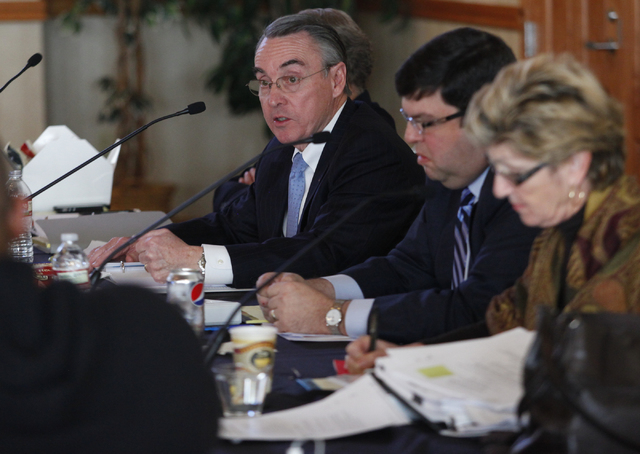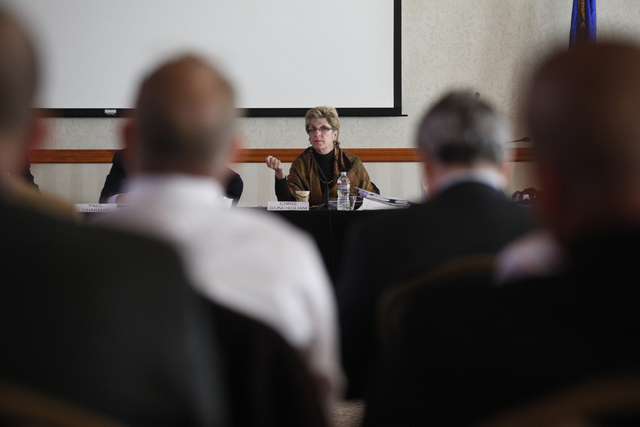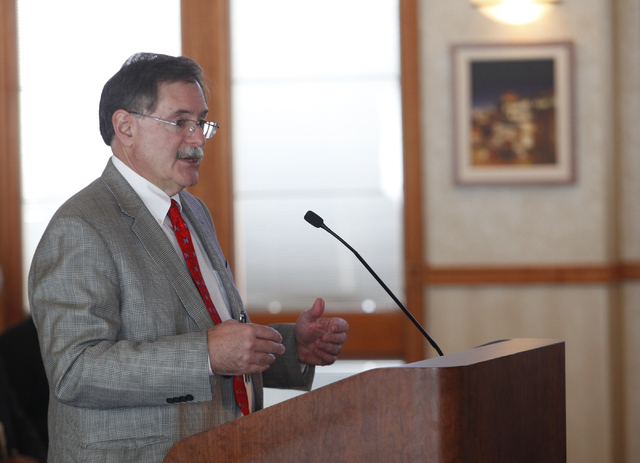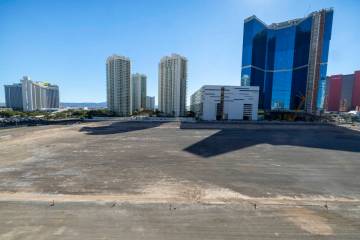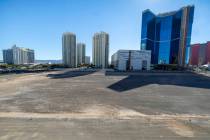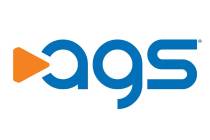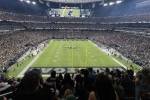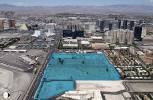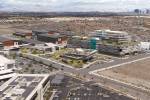UNLV panel sees presentation on new, proposed collegiate stadiums
A UNLV panel planning a new on-campus stadium on Thursday saw a variety of new and proposed collegiate and professional football stadiums from around the country during a two-hour presentation.
And the consultant who presented the PowerPoint stadium tour advised the members about one central point. No matter the UNLV stadium’s design — roof or no roof — make sure the venue allows views and showcases Las Vegas’ well-known Strip skyline, only a couple miles away from the University of Nevada, Las Vegas campus.
“Offer an experience you can’t feel at home,” consultant Mark Rosentraub told the 11-member board that is studying the need, scope, cost and funding of an on-campus stadium. “This is the show. … Make it an iconic venue.”
Regents, casino industry representatives and public officials make up the panel. Rosentraub showed the panel members renderings of several dozen football stadiums, advising the members to take the long 30-year view on the project’s economic implications. A former Indiana University professor and ex-Cleveland State dean, Rosentraub is the Bruce and Joan Bickner Endowed Professor of Sport Management at the University of Michigan’s School of Kinesiology.
“What happens with the future of the (Las Vegas area) economy rests with UNLV,” said Rosentraub, who receives $300 per hour from UNLV for his consulting work.
Rosentraub explained a new stadium that allows UNLV to play football games during the day as well as at night — combined with Las Vegas’ growing TV market that is the 40th largest in the nation — would appeal to BCS power conferences and their affiliated TV networks. Major conferences such as the Pac-12, Big 12 and Big Ten pay member schools $20 million to $25 million annually in TV revenue. UNLV is receiving about $636,000 in football TV money this year.
Rosentraub said power football conferences usually like stadiums to hold at least 50,000 fans. They also require flexibility in game times to accommodate TV network schedules, which is a factor why Arizona State University of the Pac-12 is looking at installing a canopy over its stadium to reduce the impact of heat in football games during the afternoon in the early part of the season.
“When that call comes and asks, ‘Can you hold games at flexible times?’ ” Rosentraub said, “You have to be the position to answer affirmatively.”
Rosentraub also recommended what he described as “social spaces” for fans to interact in plazas and tailgate areas and supported a covered facility, suggesting the project manager the board plans to hire offer cost options for different roof designs. Rosentraub suggested a teflon cover be evaluated.
To figure out whether it makes financial sense to build a venue with a dome or not, the stadium board plans to pick a project manager from nine bidding companies to do a cost analysis, among many other stadium evaluation duties. The winning bidder is expected to begin in January. The nine include Sterling Project Development Group from Flushing, NY, which conducted studies of UNLV’s previous stadium proposal when the university was working with its former stadium partner, Majestic Realty.
Besides the Rosentraub report, board members began touching on the dome versus no dome debate — and a few other topics, too.
Member James Dean Leavitt, a Las Vegas-based lawyer and Regent, said it would be worth the $50 million to $100 million extra to pay for a stadium roof.
“I hope we look at this from a 30-year viewpoint,” Leavitt said.
But member Rick Arpin, an MGM Resorts International executive who is working on his company’s arena project for the Strip, questioned that.
“We don’t throw around money. These are huge numbers. That’s a massive number. Is it really $100 million? What do you get for $100 million?” Arpin said.
Another board member from the resort industry, Boyd Gaming’s Paul Chakmak, also raised a funding issue.
“No time has been spent on the funding side,” Chakmak said.
And board member Chris Giunchigliani, a Clark County commissioner, connected the stadium issue with another major UNLV project — a medical school.
“As we contemplate a stadium, part of the conversation has to be a medical school. I just want to put it out there,” Giunchigliani said. She explained the legislation that created the UNLV improvement district board does not limit the panel’s responsibilities to just a football stadium/entertainment center.
None of the other board members responded to Giunchigliani’s idea of tying the medical school to the stadium.
Alan Snel can be contacted at asnel@reviewjournal.com or 702-387-5273. Follow @BicycleManSnel on Twitter.



